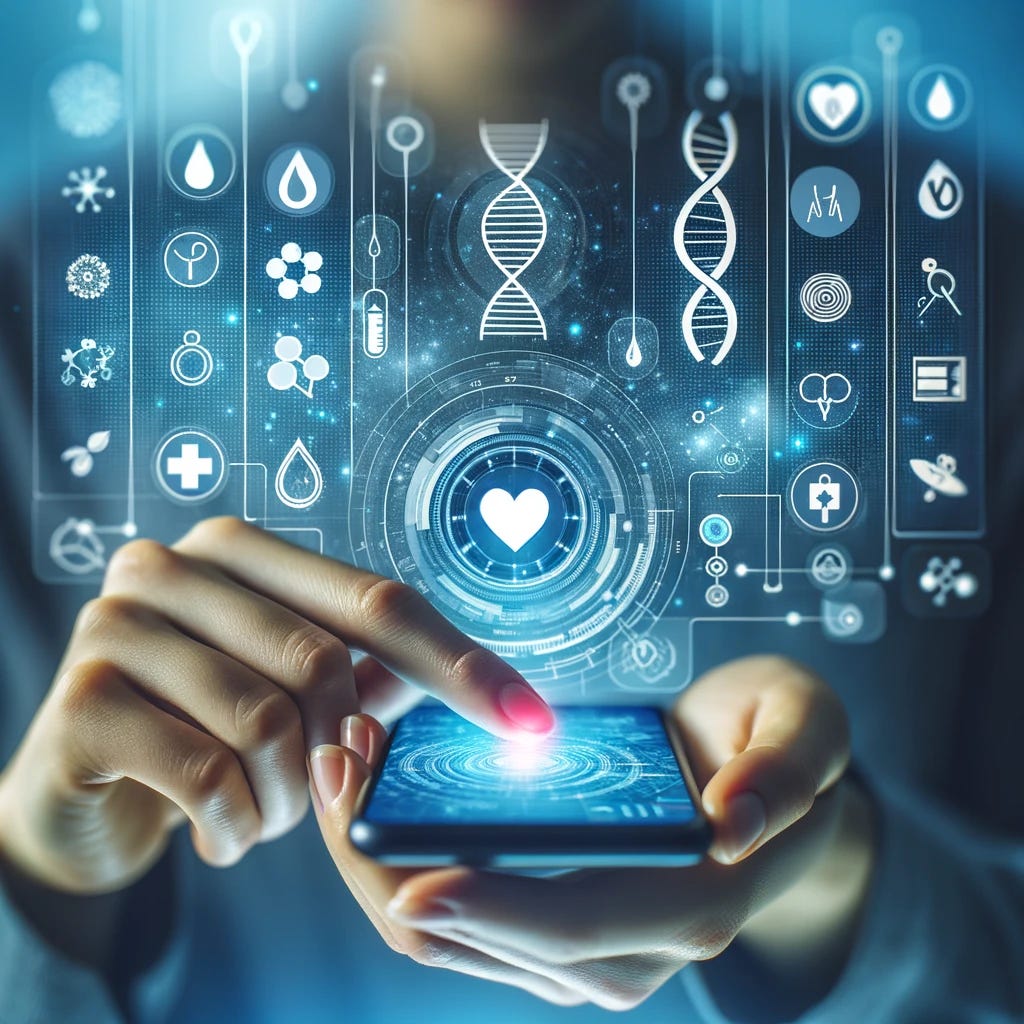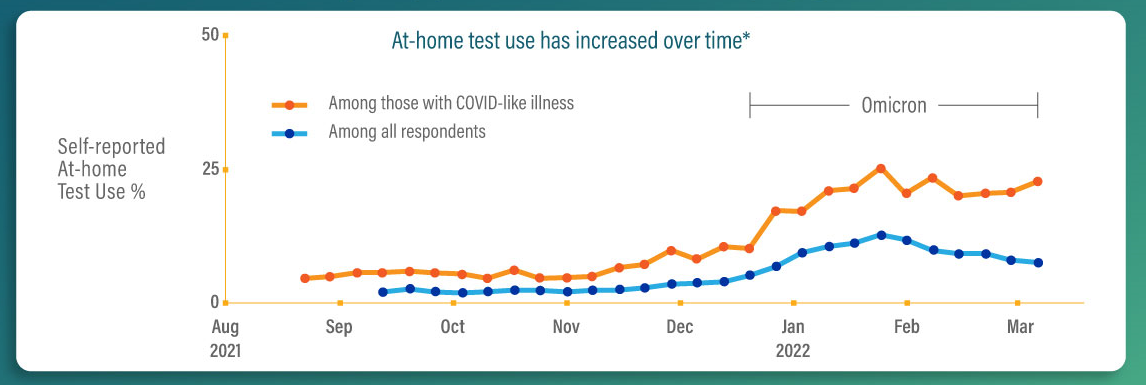Health Care at Your Fingertips: Why Diagnostic Testing is Shifting into the Home
Diagnostics as a Service (DaaS) is an emerging trend improving access and offering patients more convenience
In the rapidly evolving landscape of healthcare technology, one of the most transformative emerging trends is Diagnostics as a Service (DaaS). The approach aims to deliver diagnostic testing and analysis through digital platforms, allowing for remote access, analysis, and consultation. Unlike traditional diagnostics, which require physical visits to diagnostic centers or hospitals, DaaS platforms enable patients to access diagnostic services from the comfort of their homes. This model leverages a combination of telehealth technologies, digital platforms, connected devices, and advanced analytics to facilitate a more seamless, efficient, and user-friendly diagnostic process. Diagnostic services could include lab testing or other forms of digital monitoring.
In this post, I will explore challenges to the traditional model of lab testing, driving forces and potential benefits of a DaaS model, and challenges ahead for the space.
How the Traditional Lab Testing Model is Breaking Down
Pretty much every patient has been asked to obtain laboratory testing. It is a foundational approach for routine monitoring and diagnostic evaluation. But the current model is outdated with several challenges that present an opportunity for the DaaS model:
Limited Access: In many regions, especially rural and underserved areas, access to laboratory facilities can be limited. This creates significant barriers to timely and equitable healthcare.
High Costs: The costs associated with traditional testing can be prohibitively high for both healthcare providers and patients, stemming from equipment expenses, operational costs, and the need for specialized personnel.
Long Turnaround Times: The process from sample collection to result delivery can be lengthy, delaying diagnosis and treatment. This is often due to logistical issues in transporting samples and the time required for manual test processing.
Scalability Issues: Traditional labs can struggle to scale up rapidly in response to increased demand, such as during a pandemic. This can lead to bottlenecks and further delays in diagnostic processing.
Quality and Consistency: Variability in testing procedures, equipment, and analyst proficiency can affect the quality and consistency of test results, impacting patient care.
Data Silos: Patient data is often fragmented and siloed within different healthcare systems, hindering the ability to leverage this information for broader health insights and outcomes.
Inflexibility: Traditional lab testing models are less adaptable to incorporating new technologies or tests, slowing down the adoption of innovative diagnostic methods.
Experience: Traditional diagnostic testing often requires patients to physically visit a laboratory or healthcare facility, sometimes multiple times, which can be inconvenient, time-consuming, and uncomfortable. This is especially challenging for those with mobility issues, chronic conditions, or those living in remote areas. Experience challenges continue after testing is complete. Often there’s a disconnect between the lab that sends patients testing results and the provider that needs to help the patient understand what it means for them.
These challenges highlight the need for a more flexible, accessible, and cost-effective approach to diagnostics, creating a significant opportunity for DaaS companies to transform the landscape of healthcare diagnostics.
Driving Forces
Several factors contribute to the rising prominence of Diagnostics as a Service in the healthcare sector. First, the increasing demand for telehealth and remote healthcare services, accelerated by the COVID-19 pandemic, has highlighted the need for more accessible and flexible healthcare solutions. Second, advancements in digital technologies, such as AI, machine learning, and connected devices, have made it possible to collect, analyze, and interpret medical data remotely with high accuracy. Third, the growing emphasis on preventive care and personalized medicine has increased the demand for diagnostic services that are not only accurate but also readily accessible to facilitate early detection and tailored treatment plans.
Here’s a graph from the CDC showing adoption of in-home use of COVID-19 testing
Potential Benefits
Patients
Accessibility and Convenience: Patients can access diagnostic services from anywhere, reducing the need for travel and wait times.
Early Detection and Prevention: DaaS facilitates more regular monitoring, allowing for early detection of conditions before they become more serious.
Empowerment and Engagement: With access to their diagnostic data, patients can take a more active role in their healthcare decisions.
Health Care Providers
Efficiency and Scalability: DaaS allows healthcare providers to serve more patients with fewer resources, reducing the burden on physical facilities.
Data-Driven Insights: Access to a wealth of diagnostic data can help providers make more informed decisions and personalize treatment plans.
Enhanced Patient Care: By offering more accessible diagnostic services, providers can improve patient satisfaction and outcomes.
Health Care Systems
Cost Reduction: By reducing the need for physical infrastructure and enabling early detection, DaaS can contribute to significant cost savings.
Improved Public Health Monitoring: Aggregate diagnostic data can provide valuable insights for public health monitoring and disease prevention strategies.
Innovation and Growth: The DaaS model encourages innovation in diagnostic technologies and practices, leading to overall growth in the healthcare sector.
Challenges and Considerations
While the benefits of Diagnostics as a Service are clear, there are several challenges and considerations to address:
Data Security and Privacy: Ensuring the security and privacy of patient data is paramount, requiring robust cybersecurity measures.
Regulatory Compliance: DaaS providers must navigate complex regulatory landscapes to ensure compliance with healthcare regulations and standards.
Digital Divide: Access to digital technologies and the internet is not uniform, potentially limiting the reach of DaaS services to underserved populations.
Quality and Accuracy: Maintaining high standards of diagnostic accuracy and reliability is critical, necessitating ongoing validation and quality control measures.
What’s Ahead for DaaS?
While its not without challenges, the future of Diagnostics as a Service continues to accelerate with evolving payment models, patient experience expectations and new forms of health care delivery. As we move forward, we can expect to see:
Integration with Personalized Medicine: DaaS will play a key role in the advancement of personalized medicine, offering tailored diagnostic insights that inform individualized treatment plans.
Expansion of Connected Devices: The integration of DaaS with connected devices and wearable technologies will enhance the capability for real-time health monitoring and diagnostics.
Greater Emphasis on Preventive Healthcare: With easier access to diagnostic services, there will be a shift towards preventive healthcare, focusing on early detection and intervention.
Summary
By leveraging digital technologies, DaaS has the potential to transform the diagnostic landscape, making healthcare more proactive, personalized, and accessible. As companies in this space navigate the challenges and opportunities ahead, the continued evolution of Diagnostics as a Service will undoubtedly play a pivotal role in shaping the future of health care.



